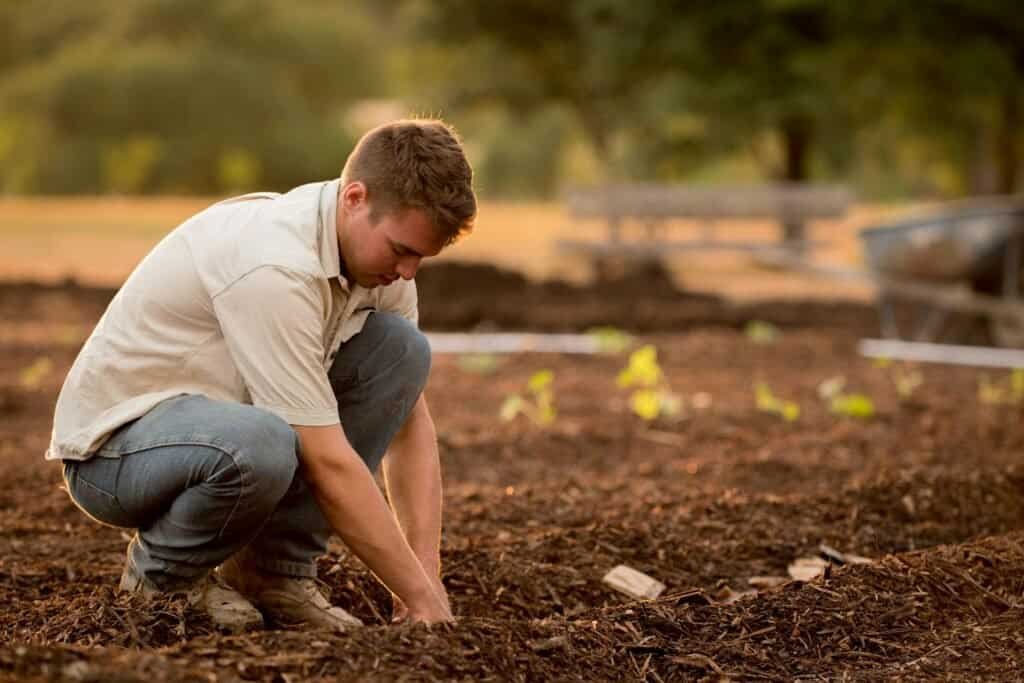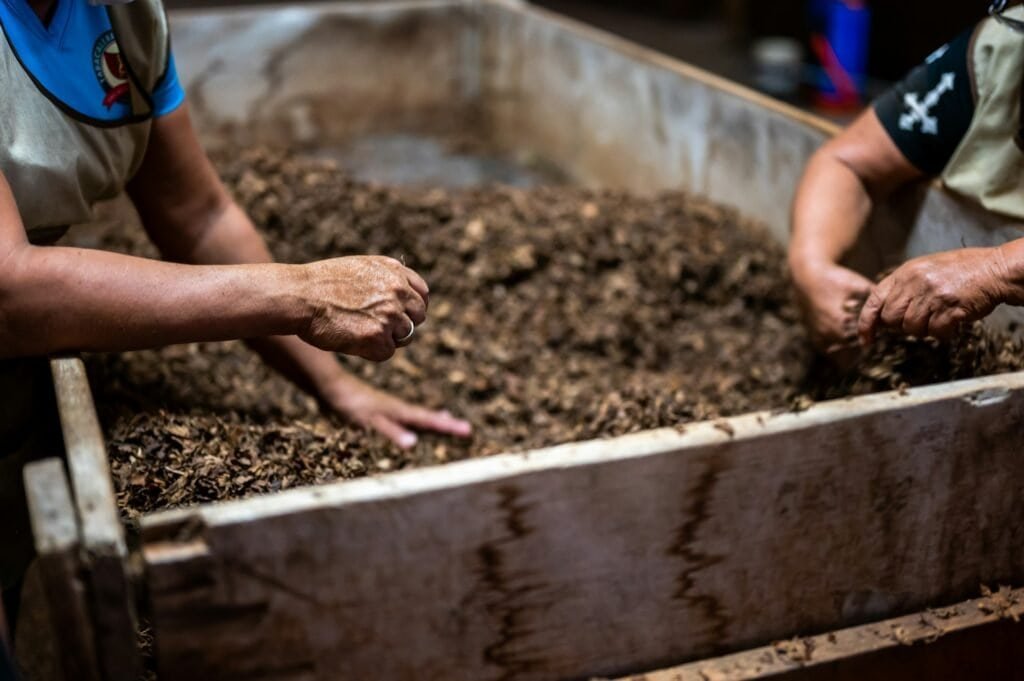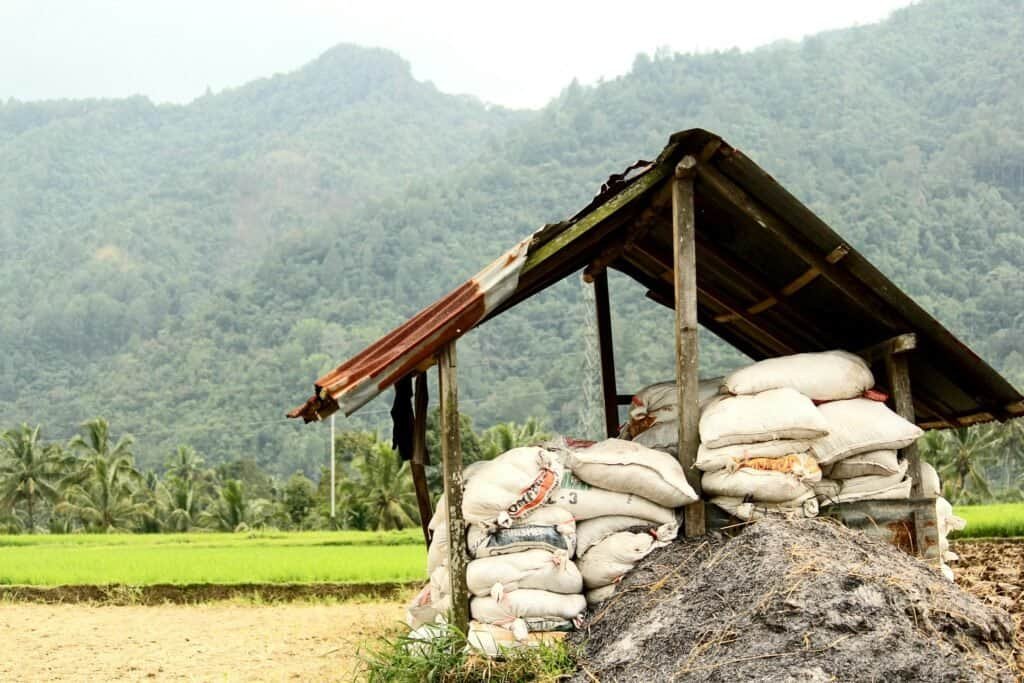Composting is a fantastic way to reduce kitchen waste and enrich your garden soil, but not all food scraps are created equal. If you’re wondering whether you can compost rice, you’re not alone. Rice—both cooked and uncooked—can be added to your compost pile, but it requires some specific considerations. This article will guide you through the process, offering tips on how to compost rice effectively and the benefits it can bring to your composting efforts.
What Is Composting and Why Include Rice?
Composting is a process that transforms organic waste into a nutrient-rich soil amendment through natural decomposition. Including rice, specifically brown rice, can contribute to the diversity of organic materials in your compost. Brown rice is a source of carbohydrates that, when broken down, can add energy to the microorganisms in your traditional compost bin. These microorganisms are vital for converting waste into usable compost.
Rice can join other kitchen leftovers like cooked vegetables in the compost bin. Cooked vegetables introduce moisture and nutrients, creating a balanced environment for decomposition. Together, these components work synergistically to create a rich, healthy compost that can enhance the fertility of your garden soil.
The Basics of Rice Composting
When it comes to composting rice, understanding the fundamentals is crucial. Whether you’re dealing with brown rice or white rice, the process is generally the same. Adding brown rice to your traditional compost bin contributes to the ‘green’ materials, which are nitrogen-rich and essential for the microbes that break down compost. These ‘green’ materials balance with ‘brown’ materials like dead leaves and twigs, which provide carbon.
It’s important to remember that, like other cooked vegetables, cooked rice should be free of oils and fats that can hinder the composting process. When adding rice to compost, it’s best to mix it with other compost materials to avoid clumping and to ensure even decomposition. The addition of various food wastes enhances the overall balance of your compost bin, making for more efficient and effective composting.
Lastly, proper maintenance of your compost bin is necessary to prevent unwanted odors and pests. Regularly turning the compost ensures that rice and other materials break down properly while also reducing the risk of attracting rodents and insects to your compost bin.
Cooked Versus Uncooked Rice in Your Compost
There’s a distinction to be made between composting cooked and uncooked rice. Cooked rice in compost can break down more quickly than uncooked rice, as it has already absorbed water which aids in the decomposition process. However, rice can attract pests, making it essential to bury rice in small amounts deep within the compost pile. This integrates the rice with green and brown materials, keeping the carbon to nitrogen ratio balanced and reducing the risk of attracting unwanted visitors.
On the other hand, when you compost uncooked rice, it’s crucial to be aware that it decomposes at a slower rate due to its lack of moisture. Including food scraps like coffee grounds and grass clippings can help speed up the breakdown of rice grains. To maintain a healthy compost and prevent attracting unwanted vermin, it’s advisable to use an enclosed bin, particularly if you live in an area with a lot of wildlife.

The Art of Composting Rice Responsibly
Composting rice effectively requires mindfulness and responsibility. The key is to avoid creating conditions that could attract rodents or cause imbalances within your composting system. By adopting the correct methods and taking precautions, rice can be a valuable addition to your composting efforts, contributing essential nutrients to the resulting natural fertilizer.
Being responsible means understanding the nature of the material you’re composting. Rice, whether leftover from a meal or uncooked from a spilled bag, can be composted with attention to detail and a commitment to maintaining the health of your compost pile. It’s an exercise in sustainable living that rewards both your garden and the environment.
Identifying the Best Composting Methods for Rice
The most suitable composting methods for rice take into account the type of rice and the amount of leftover food. For small quantities of rice, incorporating it into a traditional compost pile or bin works well. This method allows for easy mixing with other compost materials and benefits from the natural heat generated by microbial activity, which helps to break down the rice more quickly.
For larger amounts of leftover rice, or in situations where pests are a concern, utilizing specialized composting systems like tumblers or vermicomposting bins may be more appropriate. These methods provide additional protection against pests and can be more effective in breaking down dense materials like rice. Regardless of the method, it’s important to monitor the compost to ensure that it remains healthy and active.
Common Challenges and Solutions in Rice Composting
Composting rice, especially composting cooked rice, can come with its unique set of challenges. One of the main concerns is the potential to attract rodents and insects to your compost bin. These pests are attracted to the starches and nutrients found in rice, and if not properly managed, can become a nuisance and disrupt the composting process.
To mitigate these issues, it’s essential to bury the rice deep within the compost pile and to maintain a balanced mix of materials. This reduces the scent that attracts pests and ensures that the rice is broken down efficiently by the composting organisms. Regularly turning the compost also helps to discourage rodents and insects, as it disrupts any potential nesting sites and accelerates decomposition.
Step-by-Step Guide to Composting Rice at Home
Composting rice at home requires some basic steps to ensure a successful outcome. This guide will walk you through the process, from adding rice to your compost pile to maintaining the necessary conditions for optimal decomposition.
1. Incorporating Rice into a Hot Compost Pile
Adding uncooked rice to a hot compost heap involves several steps that help speed up the composting process. Start by mixing rice grains into the center of the pile to facilitate their breakdown. Since uncooked rice lacks moisture, it’s beneficial to add water to help initiate the decomposition process. Regular turning of the compost heap is essential, as it introduces oxygen and distributes heat throughout the pile, which in turn accelerates the breakdown of the rice.
2. Utilizing a Bokashi Bin for Fermenting Rice
Bokashi composting is an effective method for dealing with kitchen scraps, including rice. This anaerobic process uses kitchen waste and organic waste, such as rice, as compostable materials that are fermented with the help of bokashi bran. Adding rice to a bokashi bin initiates fermentation, which transforms it into a compost material that can later be buried in soil to further break down and eventually become natural fertilizer.
3. Sending Rice to Municipal Compost Facilities
For those who are unable to compost at home, municipal composting provides an alternative solution for both cooked and uncooked rice. These facilities have industrial-scale composting systems that can handle a wide range of organic materials, including cooked or uncooked rice, and turn them into compost for community use. They are equipped to manage large volumes of waste and often have strategies in place to prevent issues such as rodent attraction.
Utilizing municipal composting facilities can be a convenient and responsible way to dispose of rice. By separating your organic waste and delivering it to these facilities, you contribute to a larger composting effort that benefits the environment and reduces landfill waste.
The Dos and Don’ts of Adding Rice to Your Compost
When adding rice to your compost pile, there are several best practices to keep in mind. Do mix both cooked and uncooked rice thoroughly with other compost materials to prevent it from clumping and attracting rodents. Do ensure that any composting cooked rice is free from fats and oils, which can inhibit the composting process. Do bury the rice deep within the pile to minimize the risk of attracting pests.
However, don’t add large quantities of raw rice all at once as it can overwhelm the system. Don’t leave rice exposed on the top of your compost pile, as this can attract pests. And don’t forget to maintain a balanced compost pile with a mix of ‘green’ and ‘brown’ materials to ensure a healthy and efficient composting process. By following these guidelines, you can add rice to your compost pile with confidence and contribute to a more sustainable lifestyle.
The Importance of Balance: Carbon to Nitrogen Ratio
Understanding the carbon-to-nitrogen ratio is crucial when adding rice to a compost pile. This ratio should ideally be around 25-30 parts carbon to 1 part nitrogen. Rice, being a nitrogen-rich material, should be balanced with carbon-based materials like dried leaves. By maintaining this ratio, the compost remains healthy and decomposes efficiently.
If the balance tips with too much nitrogen, the compost can become slow to break down and produce unpleasant smells. To counteract this, gardeners should add more carbon-rich materials. A well-balanced compost ensures that microorganisms have the right environment to thrive and break down organic waste effectively.
Precautions for Flavored or Spiced Rice Variants
When considering adding flavored or spiced rice to a compost heap, it’s important to be cautious. The oils and spices in these rice variants can attract pests and may disrupt the balance of the compost. They may also contain ingredients that are not suitable for composting.
Before adding these types of rice to organic materials in your compost, it’s advisable to evaluate if the added substances are compostable. In some cases, it may be better to keep heavily flavored rice out of the compost to maintain the pile’s health and avoid attracting unwanted critters.
Rice Composting Across Various Climates and Conditions
Composting rice in different climates can present unique challenges. In humid climates, the moisture can cause leftover food to break down rapidly, sometimes leading to foul odors. It’s important to manage the compost by turning it frequently and ensuring proper aeration to control the smell and maintain a healthy decomposition process.
In arid conditions, the lack of moisture might slow down the breakdown of rice, necessitating the addition of water to the compost. Regardless of the climate, it’s essential to monitor the compost pile closely when adding rice to prevent odor issues and maintain a productive decomposing environment.
The Impact of Different Rice Types on Composting
Various types of rice can have different impacts when added to compost. While plain rice is generally safe to include, it should be added in moderation to avoid forming rice clumps that hinder aeration. The breakdown of organic material is crucial in backyard compost, and turning compost regularly helps mix the rice evenly and speed up the decomposition process.
Concerns such as the introduction of weed seeds or plant diseases can be mitigated by using a closed compost bin, which maintains higher temperatures to kill off unwanted bacteria. However, a smelly compost pile can result if rice is added excessively or not mixed properly. It’s important to monitor and adjust the composting process to accommodate the specific characteristics of the rice being composted.

Other Sustainable Practices for Leftover Rice
For those looking for alternatives to composting, a worm bin offers an excellent solution. Worms love rice, and incorporating organic materials like kitchen scraps can turn stale leftover rice into nutrient-rich worm manure. This process not only recycles food waste but also produces valuable compost material for gardens.
However, it’s essential to introduce rice in small quantities to prevent overfeeding and maintain the balance of the worm bin. The breakdown of organic matter by worms is a slower process, but it results in a high-quality soil amendment that benefits plant health and soil structure.
Conclusion
Rice is a staple food in many households, and composting rice can be an effective way to minimize waste. For those adding rice to their compost, it’s important to do so in small amounts. This ensures that the rice doesn’t overwhelm the compost pile or bin and maintains the balance needed for efficient composting.
By being mindful of how much rice is added and how it’s incorporated, gardeners can confidently add rice to their compost. With the right practices, rice can be a beneficial addition to a home composting system, contributing to a sustainable cycle of nutrient recycling.


